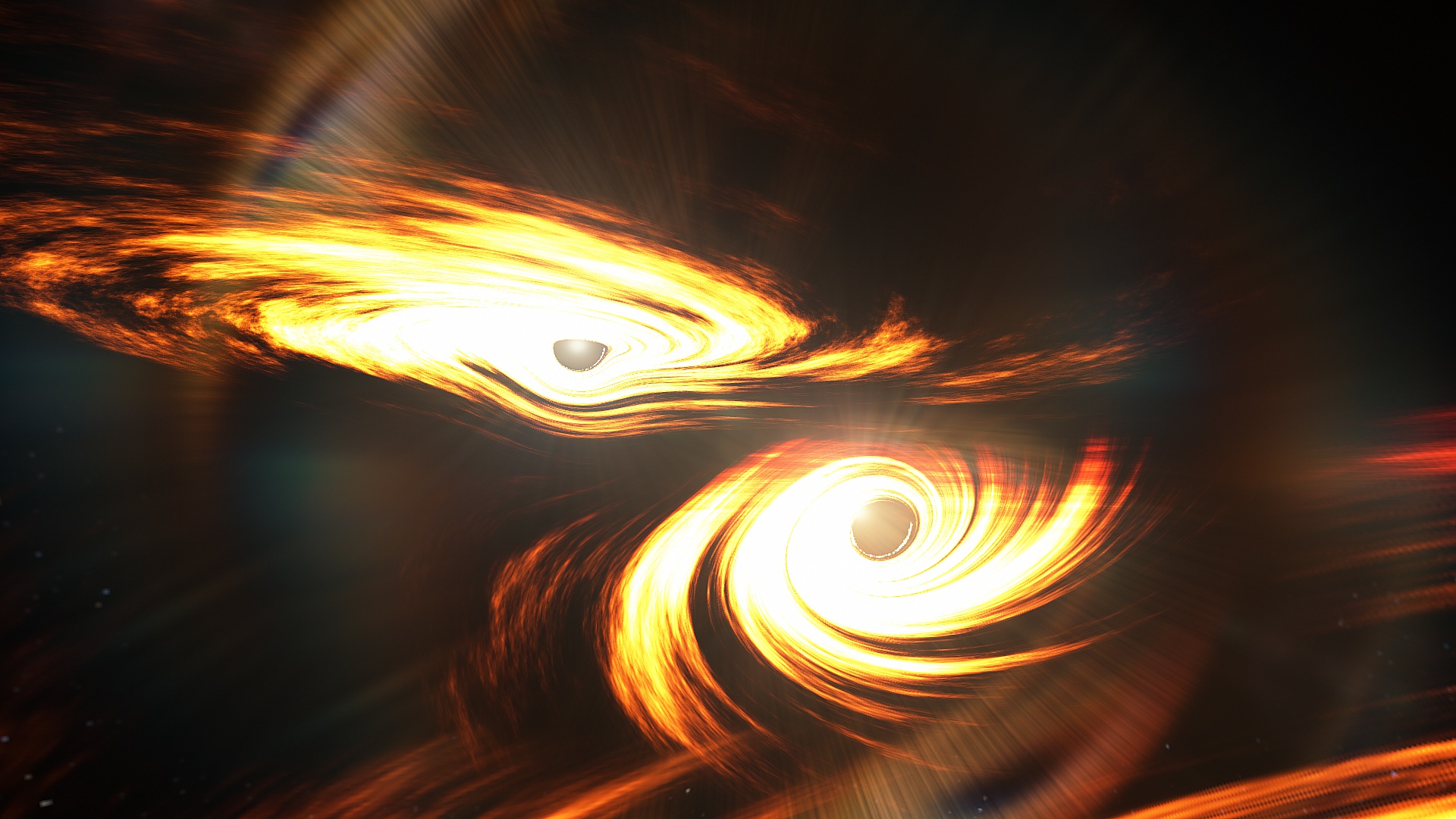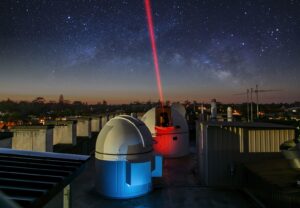Sometimes, astronomy is about slowly, carefully trawling through decades-old data. But in this case, it’s about moving as quickly as you can.
Gravitational waves are pretty cool on their own – but they might help improve our regular telescope game as well.
How to cheat at astronomy
Telescopes can only focus on a small part of the sky at a time. When something big happens, we might just miss it – unless you happen to be looking in exactly the right place at exactly the right time.
So once you know about it, gravitational wave astronomy sounds kind of like cheating.
“Normal telescopes have a low field of view, so it’s impossible for them to search to the whole sky,” says Manoj Kovalam, a PhD student with OzGrav at UWA.

Gravitational waves, on the other hand, can be detected in every direction at once. And, they’re only made by the biggest, most interesting events in the universe. Anything kicking out gravitational waves is bound to be worth a look.
But not only do they let us watch the whole sky for interesting objects – they could let us detect them before the light from those events arrives.
The speed of light … isn’t
Just to be clear, we’re not talking about gravitational waves moving faster than the speed of light. Instead, sometimes light waves move a little bit slower than the speed of light.
“Normal electromagnetic radiation can get lensed or affected by anything that’s in between us and the source,” says Manoj.
That could be dust clouds, gas clouds, or gravity wells. It’s actually pretty easy (and pretty pretty) to slow light down – you can do it with a prism at home. Gravitational waves don’t do that. They pass through everything, silently stretching and squashing it, and that’s how we detect them.

“Gravitational waves are less interactive with the interstellar medium or whatever is in the way,” Manoj says.
“So if we detect them as early as possible, we can find which direction they come from, and we can pass this information to all the telescopes around the world and they can point their telescopes in that direction.”
It also helps that gravitational waves tend to be generated before collisions take place, whereas light is only created afterwards.
What’s up in the sky
To take advantage of this, Manoj helps to write and run software called SPIIR. It’s connected directly to the detectors in the USA.

“It’ll take around 10 seconds to pack those data and process them in one of the California Institute of Technology clusters,” he says
If the computer thinks it’s detected something, it sends a ‘heads up’ to astronomers around the world.
“Then we’ll have a call,” says Manoj. “The committee will set up a meeting no matter what time of the day it is – I had to attend at 1am sometimes. We decide whether it’s a glitch that looks like an event, or a real, significant event.”
If it’s real, they’ll let other astronomers know, and the race to point telescopes at the right part of the sky is on.
An impossible collision
One recent event SPIIR detected has astronomers baffled.
“We got this alert that there were two huge masses combining into a monster black hole,” Manoj says.
A black hole about 85 times the mass of our sun was colliding with another black hole about 65 times our sun’s mass. According to Manoj, spotting an event like that happening at all is extremely unlikely. Manoj says black holes that size aren’t supposed to exist. They should either be bigger, like at the centres of galaxies, or smaller, like the ones left over after stars die.
“These are impossible masses, astrophysically speaking,” he says
“It’s not supposed to be there, but it is. Everyone was puzzled for weeks.”
“It could be that smaller black holes merged, forming this intermediate kind of black hole. But we’re still not sure.”
Minority report
Gravitational waves already let us know that something has happened in the sky – but Manoj thinks he can do even better.
“I’m working on something very interesting called early warning alerts,” he says. “Even before the gravitational wave is heard, there could be a way to identify it.”
If it’s successful, Manoj reckons, he may be able to detect gravitational waves a few minutes before an event happens. It’d be a bit like listening for the tremors before an earthquake.
That would let telescopes watch collisions as they happen, not just look at the aftermath. If it works, it’d let us see events we’ve never had the chance to observe before.
Let’s hope that code is as good at solving mysteries as it is at creating them.









